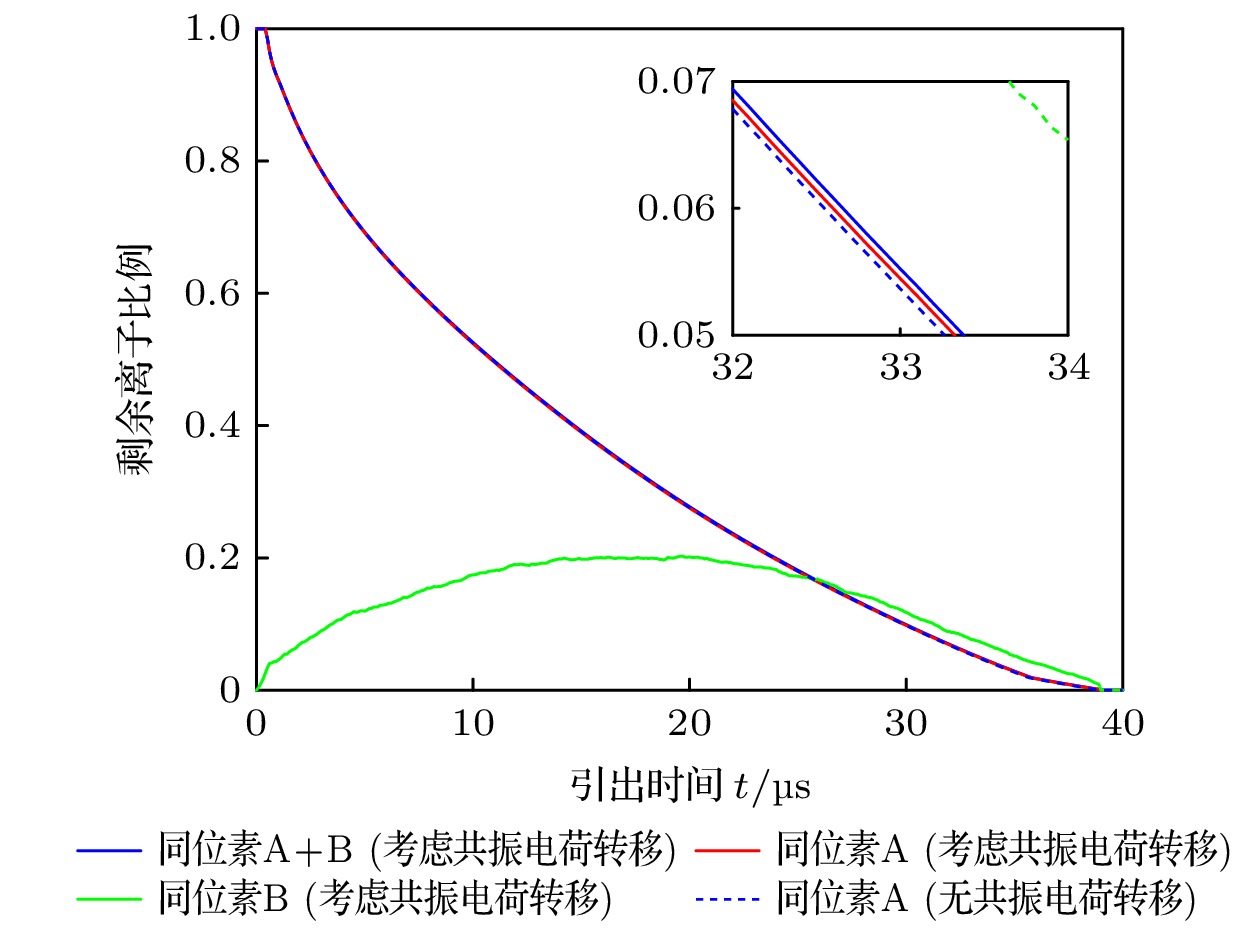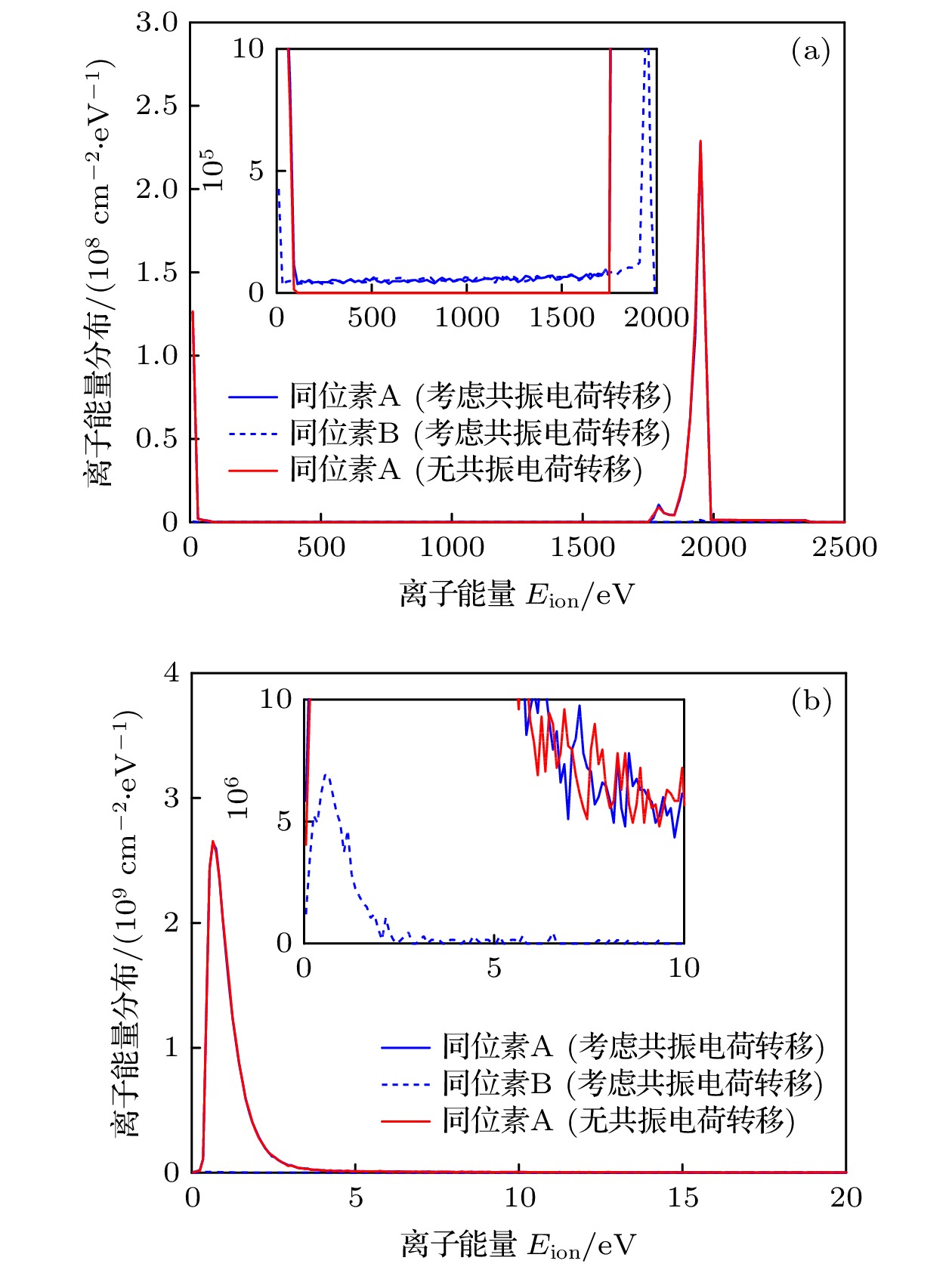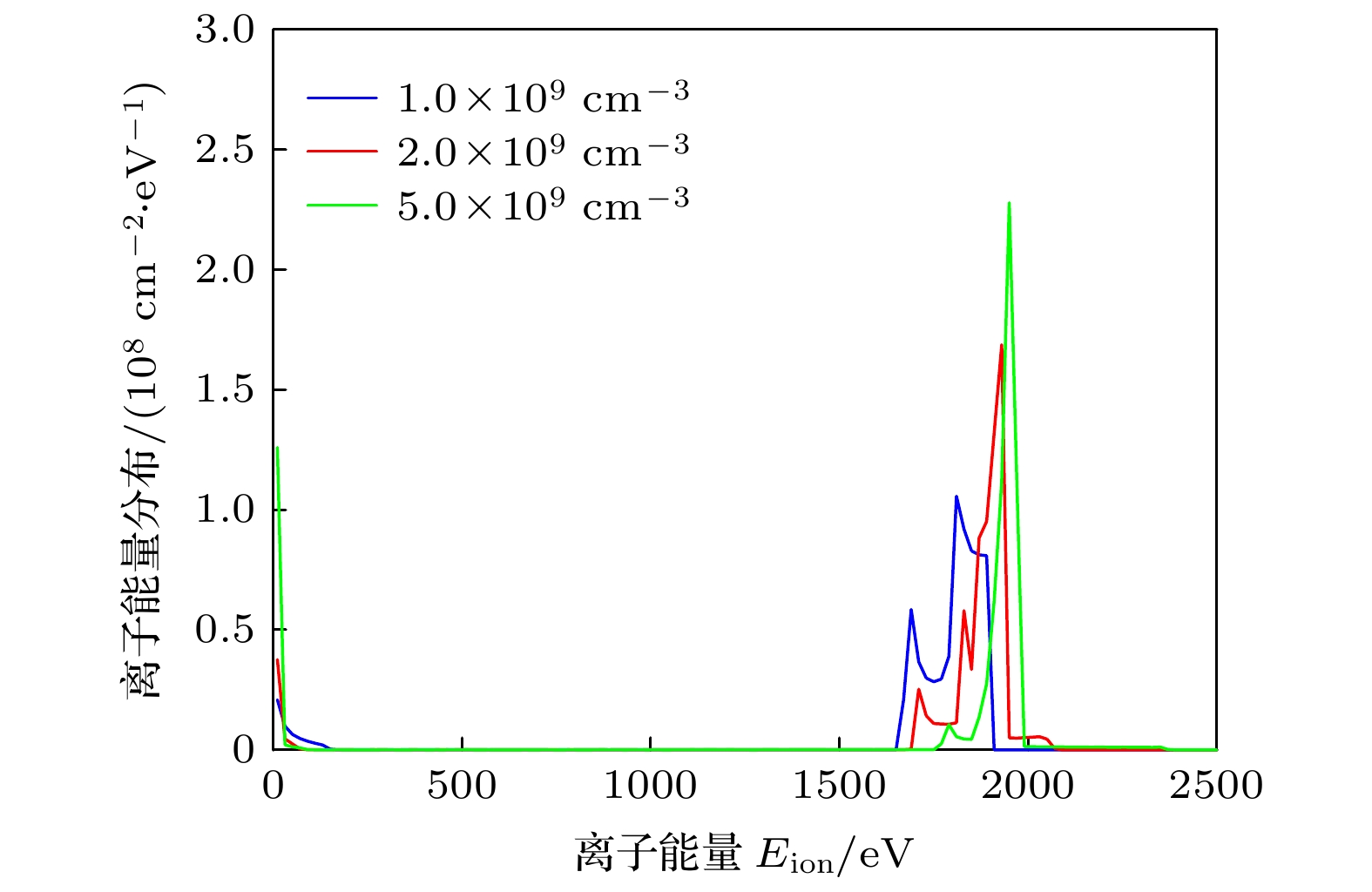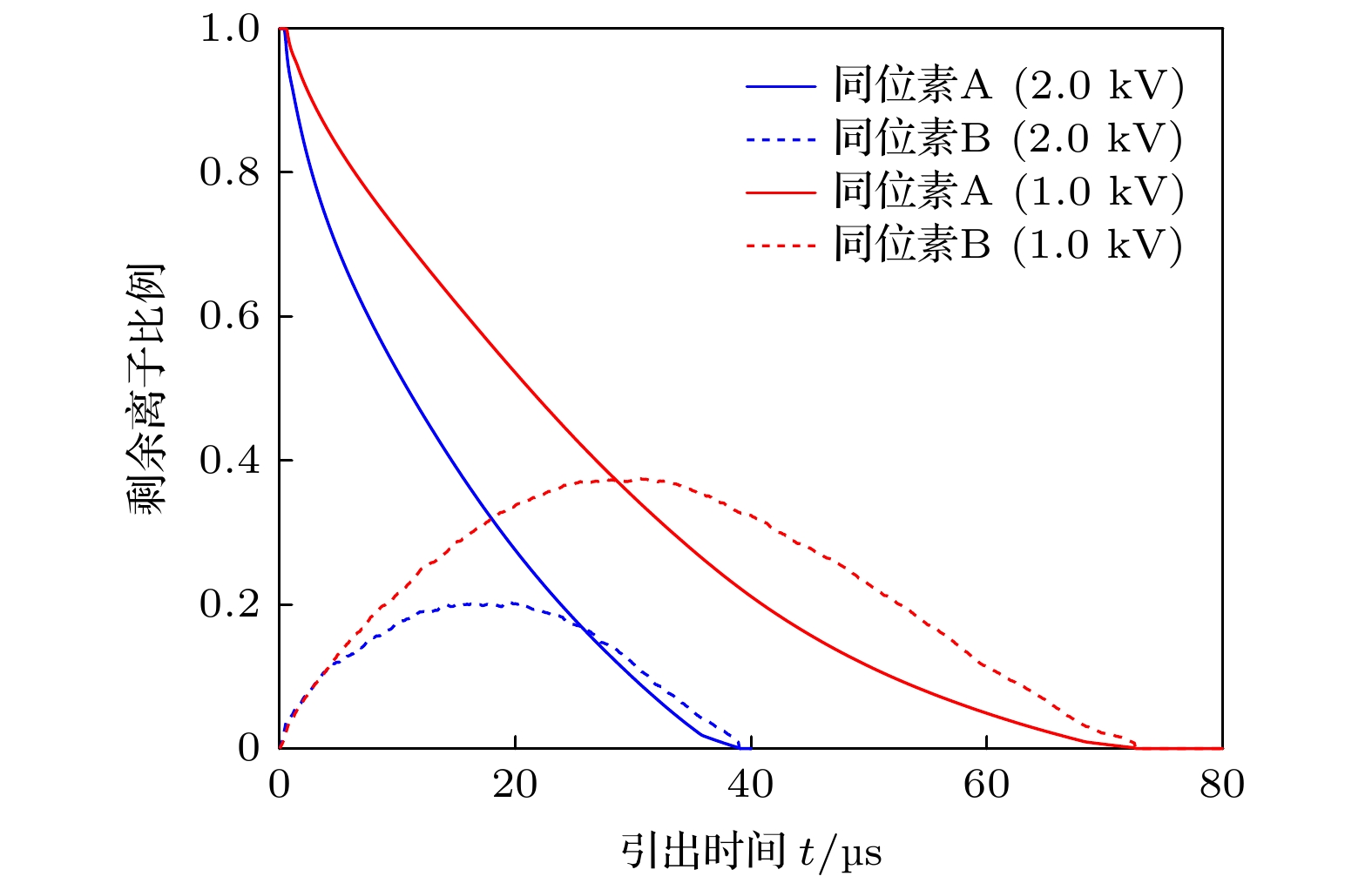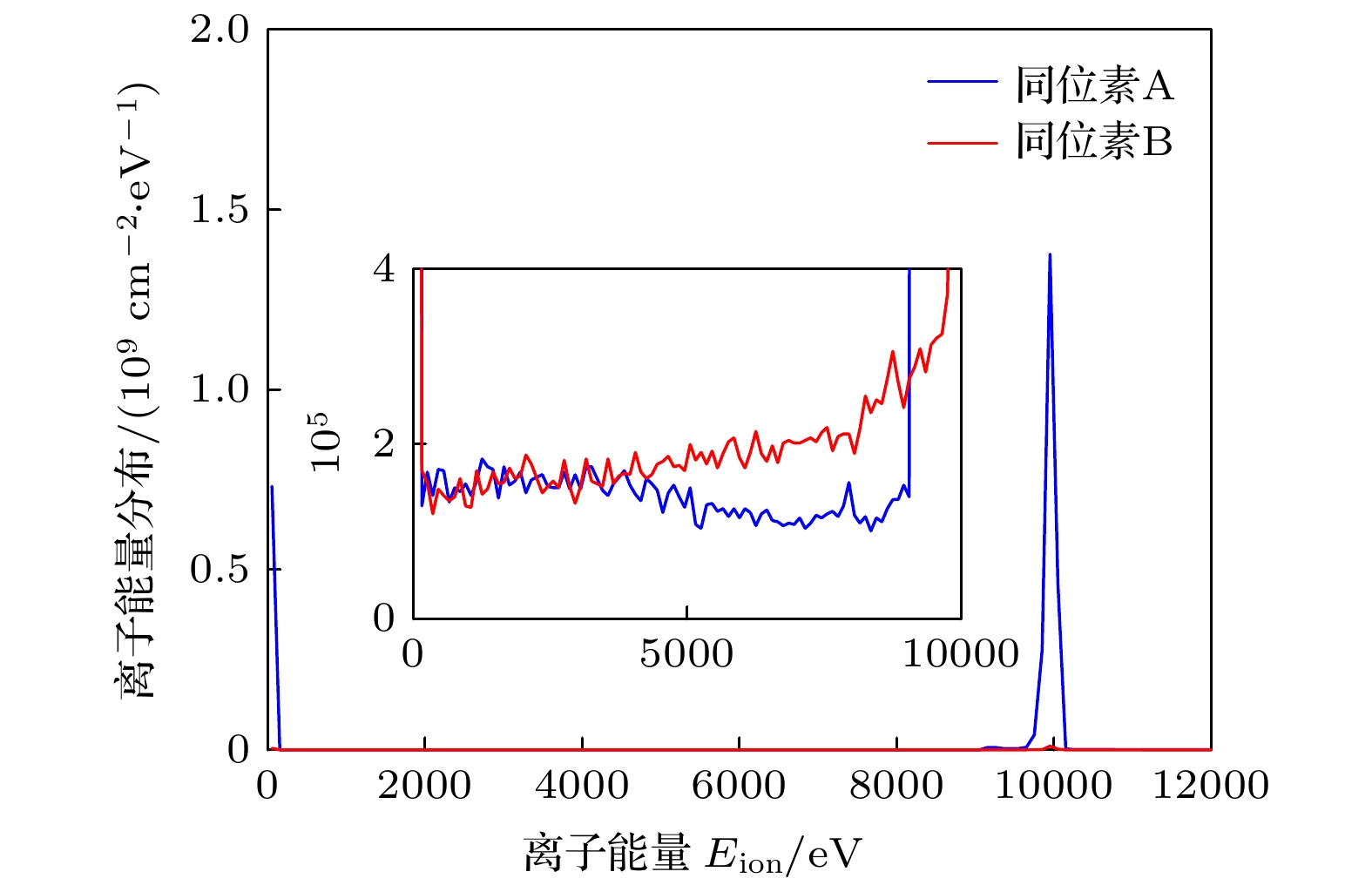-
The electric ion extraction, which plays an important role in productivity and abundance of product, is a critical step in laser isotope separation (LIS) technology. Several collision processes happen during the electric ion extraction, such as resonant and non-resonant charge exchange between ion and atom, the secondary ionization process and the ion-electron recombination. The resonant charge exchange process between target isotope ions and no-target background atoms is one of the major reasons of product contamination. As a result, the study of ion extraction with the consideration of resonant charge exchange process is essential. However, the resonant charge exchange process in ion extraction has not received enough attention. Besides, contradictory findings have been deduced in published studies. Therefore, it is necessary to clarify the effect of resonant charge exchange process in the electric ion extraction. In this article, the particle-in-cell (PIC) method and preprocessing hybrid-PIC method are adopted in both one- and two-dimensional numerical simulation. The preprocessing hybrid-PIC method is a calculation scheme by which accurate results can be obtained with less computational consumption. In this calculation scheme, the PIC method and hybrid-PIC method are used sequentially in different stages of ion extraction process. One-dimensional parallel type simulation cases are carried out under the circumstances of different initial plasma densities, applied voltages and background atom densities. The results show that the resonant charge exchange process happens in both shield layer and sheath layer. The ionic resonant charge exchange proportion in shield layer and sheath layer are related to the ion extraction time and average travel length in background vapor, respectively. Besides, they are proportional to the resonant charge exchange cross section and background atom density. And an empirical formula for deriving the resonant charge exchange ratio roughly is proposed. Two-dimensional simulations are carried out in four electrode configurations: parallel type, alternately biased parallel type, Π-type, and M-type. The extraction mechanisms are discussed and compared with each other. The simulation results show that M-type electrode configuration has the minimum resonant charge exchange ratio and extraction time among the configurations above. The results and conclusions provide an important reference for designing the LIS device.
-
Keywords:
- resonant charge exchange /
- particle-in-cell method /
- sheath layer /
- shield layer
[1] 王德武 1999 激光分离同位素理论及其应用(北京: 原子能出版社) 第218页
Wang D W 1999 Theory and Application of Laser Isotope Separation (Beijing: Atomic Energy Press) p218(in Chinese)
[2] Yamada K, Okada H, Tetsuka T, Yoshioka K 1993 J. Nucl. Sci. Technol. 30 143
 Google Scholar
Google Scholar
[3] Yamada K, Tetsuka T, Deguchi Y 1990 J. Appl. Phys. 67 6734
 Google Scholar
Google Scholar
[4] Yamada K, Tetsuka T, Deguchi Y 1991 J. Appl. Phys. 69 8064
 Google Scholar
Google Scholar
[5] Yamada K, Tetsuka T 1994 J. Nucl. Sci. Technol. 31 301
 Google Scholar
Google Scholar
[6] Kurosawa H, Hasegawa S, Suzuki A 2002 J. Appl. Phys. 91 4818
 Google Scholar
Google Scholar
[7] Watanabe J, Okano K 1993 Phys. Fluids. B 1993 3092
[8] Ogura K, Kaburaki H, Shibata T 1993 J. Nucl. Sci. Technol. 30 1248
 Google Scholar
Google Scholar
[9] Zhidkov A G 1998 Phys. Plasmas 5 541
 Google Scholar
Google Scholar
[10] Matsui T, Tsuchida K, Tsuda S, Suzuki K, Shoji T 1996 Phys. Plasmas 3 4367
 Google Scholar
Google Scholar
[11] Matsui T, Tsuchida K, Tsuda S, Suzuki K, Shoji T 1997 J. Nucl. Sci. Technol. 34 923
 Google Scholar
Google Scholar
[12] Matsui T, Tsuda S, Tsuchida K, Suzuki K, Shoji T 1997 Phys. Plasmas 4 3527
 Google Scholar
Google Scholar
[13] Matsui T, Tsuchida K, Tsuda S, Suzuki K, Shoji T 1997 Phys. Plasmas 4 3518
 Google Scholar
Google Scholar
[14] Murakami M, Ueshima Y, Nishihara K 1993 Jpn. J. Appl. Phys. 32 1471
 Google Scholar
Google Scholar
[15] 严敏 1994 博士学位论文 (北京: 清华大学)
Yan M 1994 Ph. D. Dissertation (Beijing: Tsinghua University) (in Chinese)
[16] 谢国锋 2004 博士学位论文 (北京: 清华大学)
Xie G F 2004 Ph. D. Dissertation (Beijing: Tsinghua University) (in Chinese)
[17] Verboncoeur J P 2005 Plasma Phys. Controlled Fusion 47 A231
 Google Scholar
Google Scholar
[18] Tskhakaya D, Matyash K, Schneider R Taccogna F 2007 Contrib. Plasma Phys. 47 563
 Google Scholar
Google Scholar
[19] Lu X Y, Yuan C, Zhang X Z, Zhang Z Z 2020 Chin. Phys. B 29 045201
 Google Scholar
Google Scholar
[20] Smirnov B M 2001 Phys. Usp. 44 221
 Google Scholar
Google Scholar
-
表 1 一维算例的计算条件
Table 1. Simulation parameters in onedimensional cases.
算
例计算参数 同位素A
电离率/%初始离子密
度/(109 cm–3)引出电
压/kV背景原子密
度/(1011 cm–3)1 2.5 5.0 2.0 4.0 2 2.5 5.0 1.0 4.0 3 5.0 5.0 2.0 2.0 4 1.25 5.0 2.0 8.0 5 50 100.0 10.0 4.0 表 2 各算例的数值计算结果和公式评估结果
Table 2. Simulation and empirical formula results of several simulation cases.
算例 引出时间/μs 负极板引出离子比例/% 共振电荷转移的比例 鞘层/% 通过鞘层发生共振电荷转移的比例/% 屏蔽层/% 总比例/% 1 37.23 84.62 0.780 (0.846) 0.921 (1.000) 0.371 (0.395) 1.151 (1.241) 2 66.78 70.24 0.615 (0.702) 0.876 (1.000) 0.663 (0.691) 1.278 (1.393) 3 37.20 84.61 0.384 (0.423) 0.454 (0.500) 0.192 (0.200) 0.576 (0.623) 4 37.36 84.65 1.151 (1.693) 1.784 (2.000) 0.740 (0.785) 2.250 (2.478) 5 51.62 75.78 0.654 (0.758) 0.864 (1.000) 0.549 (0.533) 1.203 (1.291) 表 3 四种引出构型中同位素A离子与同位素B原子发生共振电荷转移的比例
Table 3. Resonant charge exchange ratio between A-ion and B-atom in four electrode configurations above.
离子引出构型 共振电荷转移比例/% 平行板电场法 1.097 交替偏压电场法 0.911 Π型电场法 0.859 M型电场法 0.640 -
[1] 王德武 1999 激光分离同位素理论及其应用(北京: 原子能出版社) 第218页
Wang D W 1999 Theory and Application of Laser Isotope Separation (Beijing: Atomic Energy Press) p218(in Chinese)
[2] Yamada K, Okada H, Tetsuka T, Yoshioka K 1993 J. Nucl. Sci. Technol. 30 143
 Google Scholar
Google Scholar
[3] Yamada K, Tetsuka T, Deguchi Y 1990 J. Appl. Phys. 67 6734
 Google Scholar
Google Scholar
[4] Yamada K, Tetsuka T, Deguchi Y 1991 J. Appl. Phys. 69 8064
 Google Scholar
Google Scholar
[5] Yamada K, Tetsuka T 1994 J. Nucl. Sci. Technol. 31 301
 Google Scholar
Google Scholar
[6] Kurosawa H, Hasegawa S, Suzuki A 2002 J. Appl. Phys. 91 4818
 Google Scholar
Google Scholar
[7] Watanabe J, Okano K 1993 Phys. Fluids. B 1993 3092
[8] Ogura K, Kaburaki H, Shibata T 1993 J. Nucl. Sci. Technol. 30 1248
 Google Scholar
Google Scholar
[9] Zhidkov A G 1998 Phys. Plasmas 5 541
 Google Scholar
Google Scholar
[10] Matsui T, Tsuchida K, Tsuda S, Suzuki K, Shoji T 1996 Phys. Plasmas 3 4367
 Google Scholar
Google Scholar
[11] Matsui T, Tsuchida K, Tsuda S, Suzuki K, Shoji T 1997 J. Nucl. Sci. Technol. 34 923
 Google Scholar
Google Scholar
[12] Matsui T, Tsuda S, Tsuchida K, Suzuki K, Shoji T 1997 Phys. Plasmas 4 3527
 Google Scholar
Google Scholar
[13] Matsui T, Tsuchida K, Tsuda S, Suzuki K, Shoji T 1997 Phys. Plasmas 4 3518
 Google Scholar
Google Scholar
[14] Murakami M, Ueshima Y, Nishihara K 1993 Jpn. J. Appl. Phys. 32 1471
 Google Scholar
Google Scholar
[15] 严敏 1994 博士学位论文 (北京: 清华大学)
Yan M 1994 Ph. D. Dissertation (Beijing: Tsinghua University) (in Chinese)
[16] 谢国锋 2004 博士学位论文 (北京: 清华大学)
Xie G F 2004 Ph. D. Dissertation (Beijing: Tsinghua University) (in Chinese)
[17] Verboncoeur J P 2005 Plasma Phys. Controlled Fusion 47 A231
 Google Scholar
Google Scholar
[18] Tskhakaya D, Matyash K, Schneider R Taccogna F 2007 Contrib. Plasma Phys. 47 563
 Google Scholar
Google Scholar
[19] Lu X Y, Yuan C, Zhang X Z, Zhang Z Z 2020 Chin. Phys. B 29 045201
 Google Scholar
Google Scholar
[20] Smirnov B M 2001 Phys. Usp. 44 221
 Google Scholar
Google Scholar
Catalog
Metrics
- Abstract views: 5640
- PDF Downloads: 61
- Cited By: 0















 DownLoad:
DownLoad:

